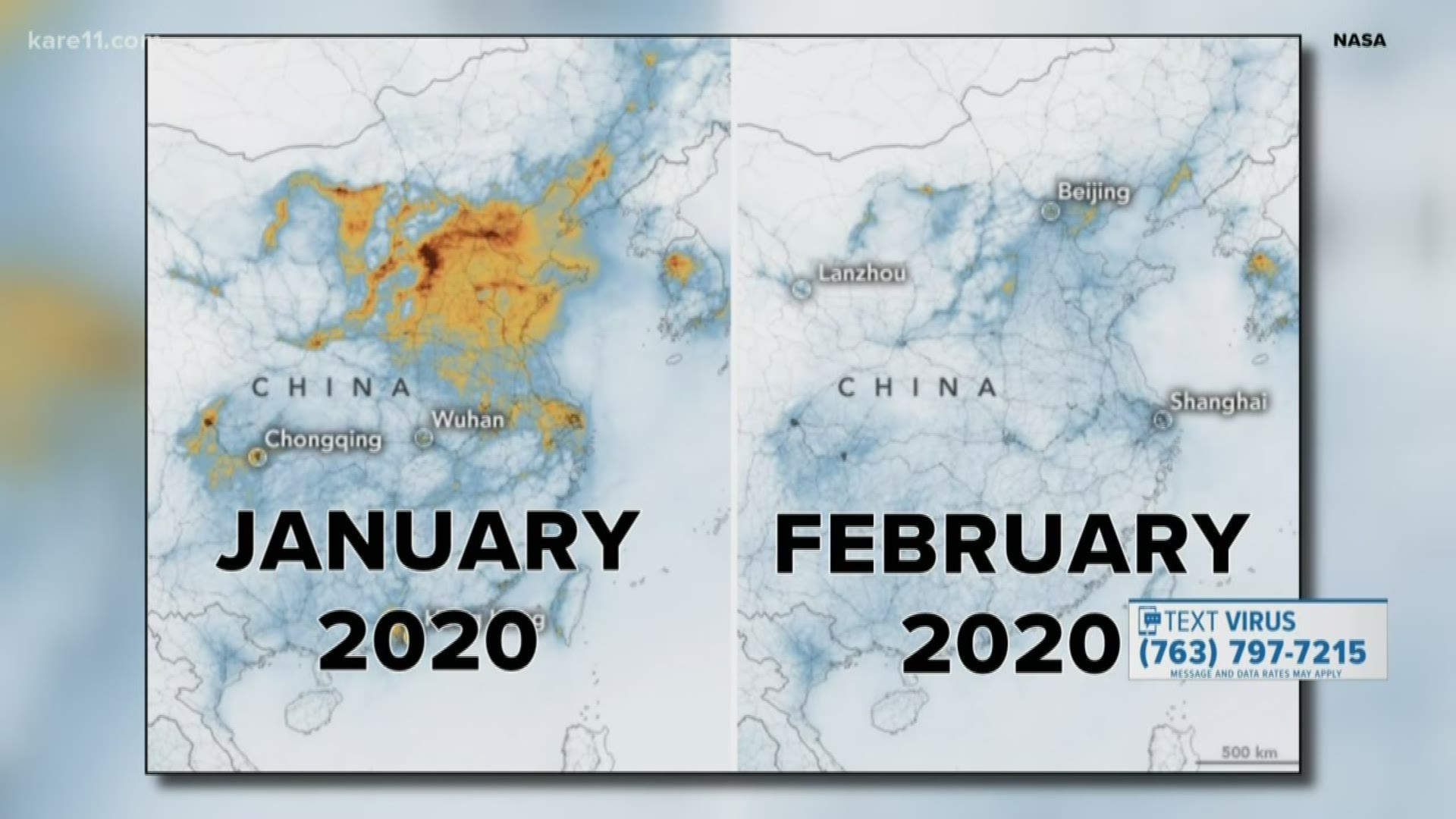MINNEAPOLIS — A bit of good news.
Air quality experts are seeing a drastic drop in air pollution around the world.
Even here in our own backyard.
“This is essentially due to the reduction of traffic and industrial activity,” air quality meteorologist Daniel Dix says.
Even someone like Dix, who studies air quality for a living with the Minnesota Pollution Control Agency, was surprised to see such a significant reduction in such a short period of time.
"They're estimating a 15% to 25% reduction in NO2 levels (nitrogen-dioxide) in the air,” Dix says.
NO2 is a pollutant that is emitted from cars and other machinery.
Dix says NO2 readings are fairly easy to read and they typically sync up with the levels of other pollutants that are typically found in the atmosphere.
“If NO2 goes up or down, the others typically follow,” Dix says.
Those numbers are based on recently released satellite images that show a dramatic reduction in NO2 around the world.
These images were captured by the Sentinel-5P Satellite.
Zooming in on the U.S. you’ll see a reduction across the country, but the biggest change is over the East Coast, specifically in the areas around New York, Pennsylvania, Connecticut and Ohio.
But these reductions are nothing compared to what scientists are seeing in Europe and Asia.
"They're estimating up to 50% reduction in China right now,” Dix says.
Images released by NASA compare the NO2 levels in January and February of this year.
The January image was captured just as China was going into a nationwide lockdown.
The image shows a large yellow and reddish blob hovering over Beijing and surrounding cities.
The February image was captured while most of the country was shut down and barely anyone was driving on the roads.
This image shows only tiny yellow dots you can barely see on the map.
“The change was very immediate and somewhat dramatic and it’s surprising to see,” Dix says.
The European Space Agency also released images of France that show a startling drop in NO2 as well.
The first image was captured in March of 2019 and shows several dark red blobs across the country that each represent high levels of N02.
One of the darkest red blobs is hovering over Paris France.
The second image was captured in March of 2020 and shows significantly lower NO2 levels across France.
The dark red blobs are now lighter and smaller, especially in major urban areas across the country.
The Minnesota Pollution Control Agency is also running tests in Minnesota to measure particles in the air.
Dix says those results look great right now, but that's mostly due to the cool rainy weather we've been seeing.
He says it might be a few weeks yet before they know if the air quality in Minnesota is truly getting better.
"It's tougher to tell until we have a stagnant, more constant pattern and things get warmer,” Dix says.
“I think as long as this continues, with the reduced traffic and industrial activity, we are going to see some natural reductions.”
Dix says people with respiratory conditions such as asthma will likely see a big difference in the coming weeks.
KARE 11’s coverage of the coronavirus is rooted in Facts, not Fear. Visit kare11.com/coronavirus for comprehensive coverage, find out what you need to know about the Midwest specifically, learn more about the symptoms, and see what companies in Minnesota are hiring. Have a question? Text it to us at 763-797-7215. And get the latest coronavirus updates sent right to your inbox every morning. Subscribe to the KARE 11 Sunrise newsletter here. Help local families in need: www.kare11.com/give11.
The state of Minnesota has set up a hotline for general questions about coronavirus at 651-201-3920 or 1-800-657-3903, available 7 a.m. to 7 p.m.

